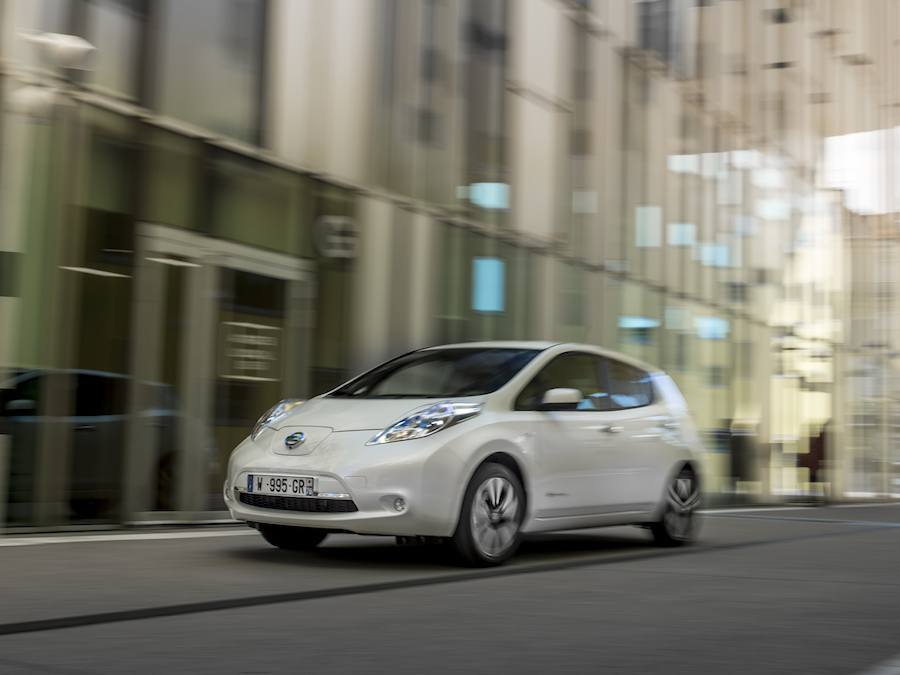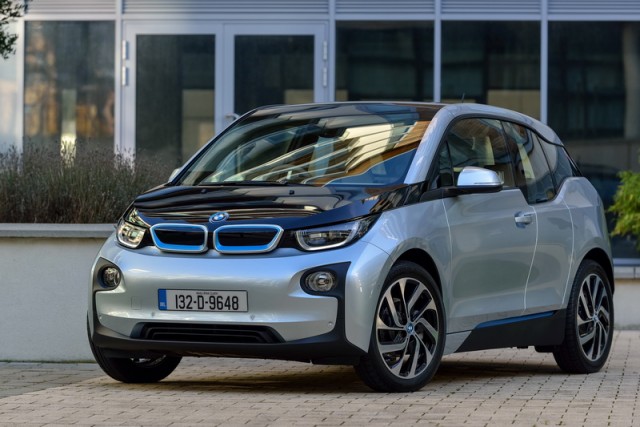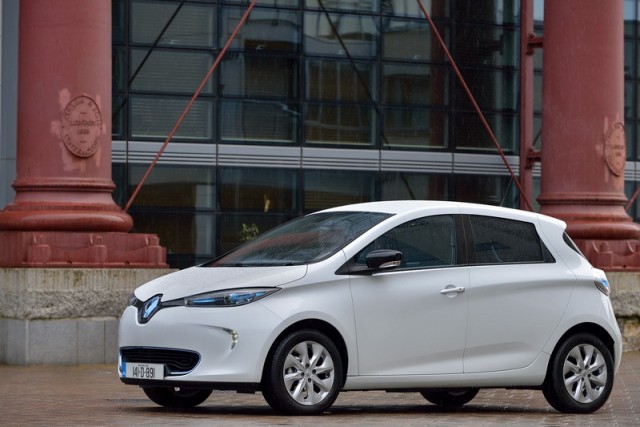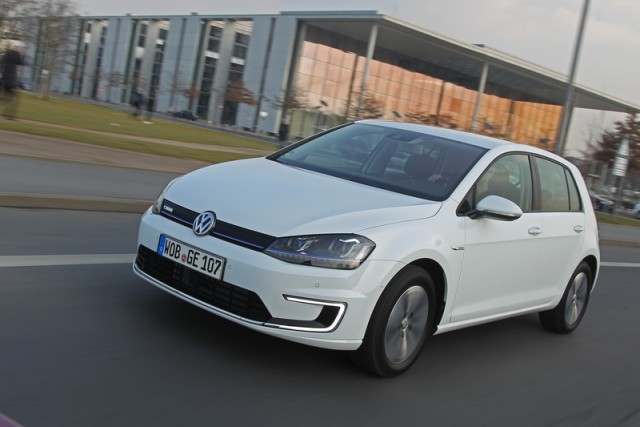The headline news is that Nissan has equipped the Leaf with a new 30kWh battery that sees its potential range extend to 250 kilometres. That not only reduces range anxiety, but puts the all-electric car onto many more buyers' consideration lists.
In the metal
Don't worry if you think that this 'new' Nissan Leaf looks just the same as before - it does. The most significant change is in fact the introduction of a new Bronze exterior hue, although Leaf aficionados will spot a different exterior aerial too. Visually it is a car that continues to divide opinion but as the Leaf becomes a more common sight on our roads, this division is softening. Thus far in 2015 Nissan Ireland has seen over 400 new Leafs registered, bringing the number on Irish roads to over 1,000.
Perhaps the more important feature for buyers is its size rather than looks. Dimensionally it comes in on par with many of the main players in the busy C-segment, where the likes of the Ford Focus, Opel Astra and Volkswagen Golf take up a large proportion of sales figures. Because the battery is housed in the floor of the car you do sit slightly higher up than in some of the Leaf's rivals, but head- and legroom both front and rear aren't affected, nor is boot space - with 370 litres available when all seats are occupied. The higher capacity battery does add 21kg in weight.
Nissan is only offering the 30kWh battery on its mid-level and range-topping SV and SVE specifications and these models also now feature an updated version of the NissanConnect EV infotainment system, which uses a seven-inch colour touchscreen. The SV model comes with suede fabric upholstery, but the SVE features leather upholstery and while both models come equipped with alloy wheels you get 17-inch items on the SVE model - over the SV's 16-inch rims.
Driving it
Despite the introduction of this new higher capacity battery the actual performance parameters of the Nissan Leaf haven't changed - other than the potential driving range. This now stands at a useful 250 kilometres, 50 more than the regular Leaf, which should be enough to give the all-electric car more appeal to curious buyers.
The Leaf does ride well, even on those 17-inch alloy wheels, and while you might expect the lack of an engine note to make other road noises more apparent it isn't the case - it is quite a well-insulated cabin. The suspension is a touch on the firm side but there is still plenty of wheel travel to cope with more uneven road surfaces.
Conventionally the Leaf drives in 'Eco' mode, which dulls down the throttle sensitivity in order to prolong battery life. Even in this setting the take-off from rest is quite good, with the electric motor providing seamless and smooth acceleration. Its maximum torque is 254Nm and this is available from zero rpm. Once up to speed it has all of the pep and go of any diesel car in the segment, and deactivating the Eco mode - via a button mounted on the multifunction steering wheel - adds to this. The throttle becomes more responsive and newcomers to the Leaf will find the acceleration surprising - made seemingly better by the fact that it is a near-silent drivetrain.
Driving out of Eco mode obviously has an impact on battery life and therefore driving range, though we suspect that most Leaf owners will rarely do this. To help prolong driving range there is also a B-mode that is activated by sliding the semi-spherical gear selector down and to the left. This increases the rate at which energy in recuperated under braking and feeds it back into the battery. It only adds a nominal amount but every little helps.
Around town the Leaf is a manoeuvrable car, with a turning circle that betters many big players in the same size league, but out of town the silent hatchback can deliver a quality of ride that will leave the majority of users with little cause for concern. If anything it is a little bit dull, lacking the directness of the steering and chassis control that you would find in a Ford Focus, for example. That said, this isn't what the Leaf is trying or proposing to do. As an electric car few other similarly-powered rivals can match how normal the Leaf feels.
What you get for your money
The additional 50 kilometres offered by the new 30kWh battery is very welcome, but the €3,000 premium that this battery comes at is not. Certainly the longer range may place the Leaf into more people's consideration list, but whether these people will need or want to pay for a range extension at that price remains a moot point.
Nissan also hasn't made this battery available on its entry level Leaf XE model, so buyers will need to spend €26,990 to get into the Leaf SV with the 30kWh battery. The SV specification does at least add a good degree of equipment, including rain sensing wipers, cruise control and speed limiter, that seven-inch NissanConnect EV touchscreen system and automatic headlights amongst other things.
Summary
The strongest card in the Nissan Leaf's hand is the fact that it performs its duties so well and without any fuss that it makes electric driving the hassle-free event it should be. Yes its longer driving range is welcome, but at a significant cost increase for what essentially gives the average user the option of not having to plug in their car for one day more.



















